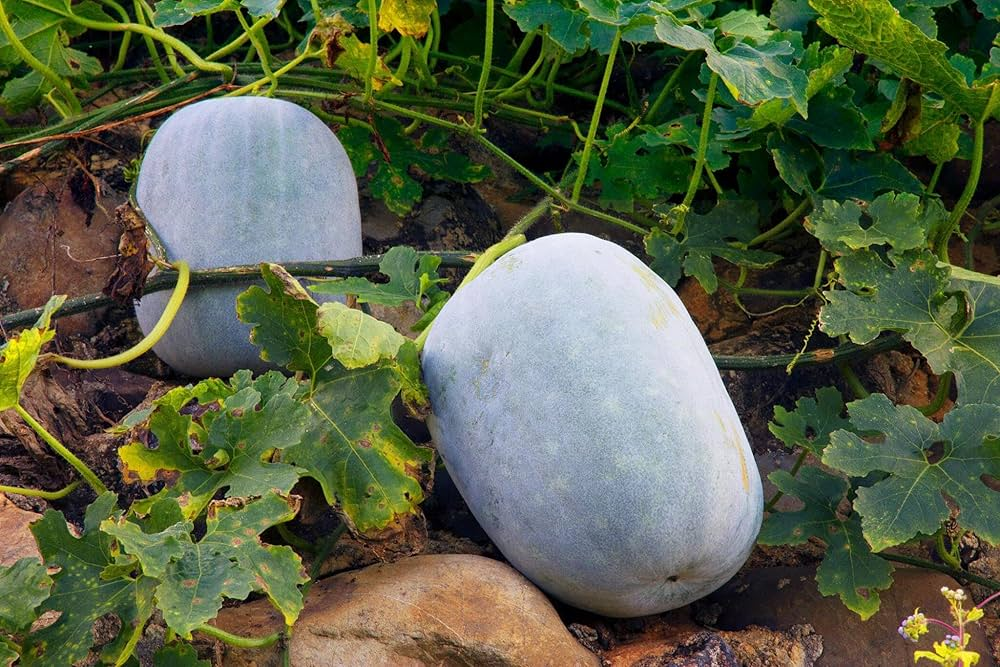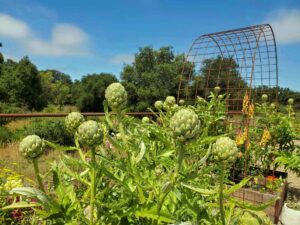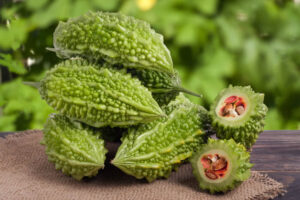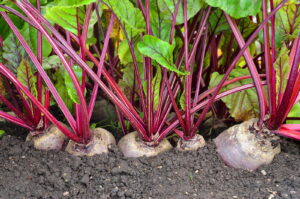How to Grow and Use Culinary Ash Gourd: A Complete Guide
Are you looking to add a versatile and nutritious vegetable to your home garden? Ash gourd (Benincasa hispida), also known as winter melon, wax gourd, or white pumpkin, might be the perfect addition. This large, subtropical vine produces impressive fruits that are not only delicious but also packed with health benefits. In this comprehensive guide, you’ll learn everything about growing ash gourd at home—whether in your garden, in containers, or even indoors—and how to make the most of this remarkable vegetable in your kitchen.
What is Ash Gourd?
Ash gourd is a member of the Cucurbitaceae family, related to cucumbers, melons, and pumpkins. It’s called “ash gourd” because mature fruits develop a waxy, ash-like coating on their skin. The fruit can grow quite large, with some varieties reaching up to 30-40 pounds, though most commonly harvested when they’re 5-15 pounds.
According to the USDA Agricultural Research Service, ash gourd is gaining popularity in the United States both for its culinary versatility and medicinal properties. It’s low in calories but rich in vitamins, minerals, and fiber, making it an excellent addition to a healthy diet.
Why Grow Ash Gourd at Home?
Before diving into the growing process, let’s consider why you might want to grow ash gourd:
- Nutritional powerhouse: Ash gourd is rich in vitamins B and C, calcium, zinc, and other minerals.
- Versatile culinary ingredient: It can be used in soups, stir-fries, curries, desserts, and beverages.
- Long shelf life: When properly stored, mature ash gourds can last for several months.
- Space-efficient: Despite producing large fruits, with proper trellising, you can grow ash gourd even in small spaces.
- Growing US market: According to the USDA Economic Research Service, specialty vegetables like ash gourd are seeing increased demand in American markets.

Growing Conditions for Ash Gourd
Before planting ash gourd, you should understand its growing requirements:
Climate and Timing
Ash gourd thrives in warm conditions with temperatures between 75-85°F (24-29°C). In the United States, it grows best in USDA hardiness zones 8-11, though you can grow it in cooler regions during summer months.
- Planting time: Plant after all danger of frost has passed and soil temperatures reach at least 65°F (18°C).
- Growing season: Ash gourd needs 90-120 days to mature, so plan accordingly for your region.
Soil Requirements
- Soil type: Well-draining, fertile loam with high organic matter content
- pH level: 6.0-6.8 (slightly acidic to neutral)
- Amendments: Mix in compost or well-rotted manure before planting
Space and Support
Ash gourd plants are vigorous climbers with vines that can extend 10-15 feet or more. You’ll need:
- Spacing: 3-4 feet between plants if growing on a trellis; 6-8 feet if allowing to spread on the ground
- Support structure: Strong trellis, arbor, or fence to support the heavy fruits
How to Grow Ash Gourd from Seeds
Growing ash gourd from seeds is relatively straightforward. Here’s a step-by-step guide:
Seed Preparation
- Source quality seeds: Purchase from reputable suppliers or save seeds from fully mature ash gourds.
- Seed treatment: Soak seeds in warm water for 24 hours before planting to improve germination.
- Germination requirements: Seeds germinate best at temperatures between 75-85°F (24-29°C).
Planting Seeds Directly in the Garden
- Prepare the soil by working in compost and creating small mounds 6-8 inches high and 3-4 feet apart.
- Plant 3-4 seeds per mound, about 1 inch deep.
- Water thoroughly after planting.
- Once seedlings reach 2-3 inches tall with 2-3 true leaves, thin to the strongest 1-2 plants per mound.
Starting Seeds Indoors
If you live in cooler regions or want to get a head start:
- Start seeds 3-4 weeks before the last expected frost date.
- Use biodegradable pots (3-4 inches in diameter) filled with seed-starting mix.
- Plant 1-2 seeds per pot, 1 inch deep.
- Place in a warm location (75-85°F/24-29°C) or use a heat mat.
- Keep soil consistently moist but not waterlogged.
- Once seedlings develop 2-3 true leaves, begin hardening them off before transplanting.
Growing Ash Gourd in Containers
Yes, you can grow ash gourd in containers! Here’s how:
Container Requirements
- Size: Minimum 15-20 gallons (larger is better)
- Depth: At least 12 inches deep
- Drainage: Multiple drainage holes
Potting Mix for Container-Grown Ash Gourd
Mix equal parts:
- Quality potting soil
- Compost
- Coconut coir or peat moss
- Perlite or vermiculite for drainage
Container Growing Tips
- Position your container where it will receive at least 6-8 hours of direct sunlight.
- Install a trellis or support structure at the time of planting.
- Plant 2-3 seeds and thin to the strongest seedling.
- Water more frequently than garden-grown plants, as containers dry out faster.
- Feed with balanced liquid fertilizer every 2-3 weeks.
Growing Ash Gourd Indoors
Growing ash gourd completely indoors is challenging but possible with the right setup:
Indoor Requirements
- Light: Grow lights providing 12-14 hours of bright light daily
- Temperature: Stable 75-85°F (24-29°C)
- Humidity: 50-70% relative humidity
- Pollination: Hand pollination will be necessary (more on this below)
- Support: A sturdy trellis system that can be anchored to walls or ceiling
Indoor Growing Tips
- Use the largest container possible that your space allows.
- Ensure adequate air circulation with fans to prevent disease.
- Hand pollinate flowers early in the morning when both male and female flowers are open.
- Maintain consistent watering and fertilizing schedule.
Caring for Ash Gourd Plants

Watering Guidelines
Ash gourd requires consistent moisture, especially during flowering and fruiting. Here’s a watering guide:
| Growth Stage | Watering Frequency | Amount | Notes |
|---|---|---|---|
| Seedling stage | Every 1-2 days | Light | Keep soil moist but not soggy |
| Vegetative growth | Every 2-3 days | Moderate | Allow top inch of soil to dry between watering |
| Flowering & fruiting | Every 2 days | Deep | Critical period – inconsistent watering can cause fruit issues |
| Maturation | Every 3-4 days | Moderate | Gradually reduce as fruits mature |
Fertilization Schedule
- Base fertilization: Mix compost or well-rotted manure into planting soil
- During growth: Apply balanced liquid fertilizer (10-10-10) every 2-3 weeks
- Flowering stage: Switch to lower nitrogen, higher phosphorus and potassium fertilizer (5-10-10)
- Container plants: Fertilize more frequently, every 10-14 days
Pollination
Ash gourd produces separate male and female flowers on the same plant. You’ll recognize female flowers by the small swelling (immature fruit) at the base of the flower. To ensure good fruit set:
- Let insects do the work if outdoor conditions permit.
- For indoor or enclosed settings, hand pollinate by transferring pollen from male flowers to female flowers using a small brush or by removing a male flower and touching its center to the center of female flowers.
Common Pest and Disease Management
Pest Control
- Aphids: Spray with neem oil or insecticidal soap
- Squash bugs: Handpick and destroy; apply diatomaceous earth around plants
- Cucumber beetles: Use yellow sticky traps; apply row covers until flowering
- Spider mites: Increase humidity; spray with water-diluted neem oil
Disease Prevention
- Powdery mildew: Ensure good air circulation; avoid overhead watering
- Downy mildew: Rotate crops; apply copper-based fungicide if necessary
- Fusarium wilt: Use resistant varieties; practice crop rotation
- Viral diseases: Control insect vectors; remove and destroy infected plants
Harvesting and Storing Ash Gourd
When to Harvest
Ash gourd is ready to harvest when:
- The fruit reaches full size (varies by variety)
- The skin develops a waxy, whitish bloom
- The stem begins to dry
- The fruit produces a hollow sound when tapped
This usually occurs 90-120 days after planting.
Harvesting Technique
- Use sharp, clean pruning shears or a knife.
- Cut the stem 1-2 inches above the fruit.
- Handle carefully to avoid bruising.
- Wipe the fruit with a dry cloth to preserve the waxy coating.
Storage Methods
- Short-term storage: Keep at room temperature (65-75°F/18-24°C) for 2-3 weeks.
- Long-term storage: Store in a cool (50-60°F/10-15°C), dry, dark place for up to 6 months.
- After cutting: Refrigerate cut pieces in airtight containers for up to a week.
Culinary Uses and Health Benefits
Culinary Uses
Ash gourd is remarkably versatile in the kitchen:
- Soups and stews: Adds body and absorbs flavors
- Stir-fries: Maintains texture when cooked quickly
- Curries: Traditional in many Asian cuisines
- Juices and smoothies: Refreshing and hydrating
- Preserves and candies: Often used in sweet preparations in Asia
- Vegetable substitutes: Can replace zucchini or summer squash in recipes
Health Benefits
According to the National Institutes of Health, ash gourd offers several health benefits:
- Low in calories but high in fiber, making it excellent for weight management
- Contains antioxidants that help combat oxidative stress
- Rich in vitamins C and B complex
- Good source of minerals including calcium, zinc, and iron
- Traditional medicinal uses for digestive health and reducing inflammation

Growing Ash Gourd for the US Market
If you’re interested in growing ash gourd commercially in the US:
Market Opportunities
- Specialty grocery stores: Focus on Asian and international markets
- Farmers markets: Direct-to-consumer sales, especially in diverse communities
- Restaurant supply: Growing demand from chefs exploring international cuisines
- Community Supported Agriculture (CSA): Introduce ash gourd to subscribers
Regulations and Considerations
- Check with your state’s Department of Agriculture regarding any specific regulations for growing and selling produce.
- Consider organic certification if targeting premium markets.
- Investigate post-harvest handling requirements for commercial sales.
Conclusion
Growing ash gourd at home—whether in your garden, in containers, or indoors—can be a rewarding experience that yields impressive and versatile fruits. With proper care and attention to its basic needs, you can enjoy this nutritious vegetable fresh from your own growing space.
As interest in diverse culinary traditions continues to grow in the United States, ash gourd offers an exciting opportunity for home gardeners and small-scale farmers alike. Whether you’re growing for personal use or exploring market opportunities, this remarkable gourd deserves a place in your planting plans.
Remember that successful ash gourd cultivation depends on understanding the plant’s needs and adapting your growing methods to your specific climate and conditions. With the information in this guide, you’re well-equipped to begin your ash gourd growing journey.






